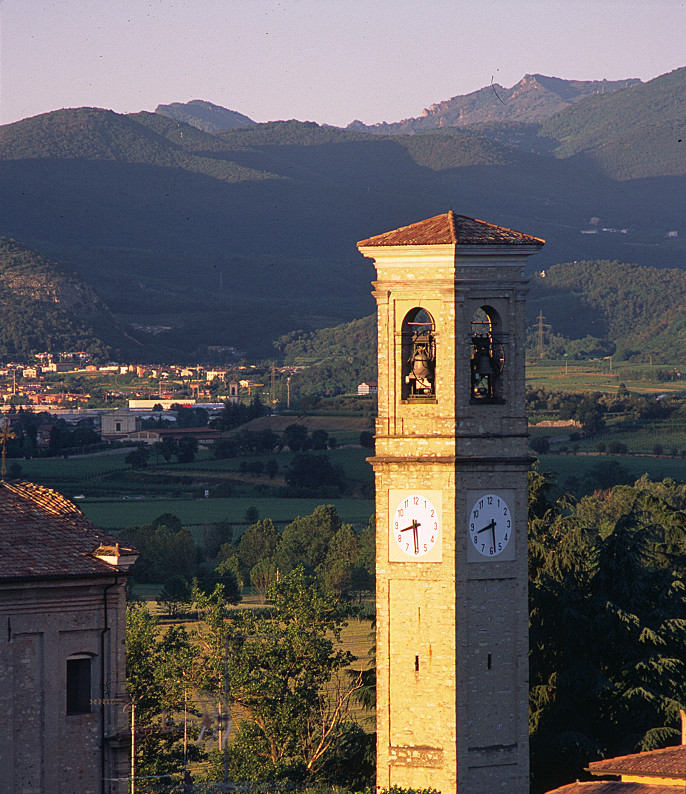| View previous topic :: View next topic |
| Author |
Message |
paperinik

Joined: 11 Jan 2009
Posts: 100
Location: Adro, italy
|
 Posted: Tue Aug 10, 2010 10:28 pm Post subject: Canon EF-M Posted: Tue Aug 10, 2010 10:28 pm Post subject: Canon EF-M |
 |
|
paperinik wrote:
Ok, time to write down a couple of words about that camera.
These are just my hands-on impressions, if you want a manual you can find it on orphancameras.com
The camera was made to put in the EOS line something manual, mainly for student use.
This is pretty stupid IMO, because as far as I know, every EOS body has the possibility to work in manual mode. The manual control on two big wheels can be useful in case you want to teach the camera basics to a 6 year old child, but c'mon...
The good news is that doing so we have a good electronic camera to use with manual focus lenses, since has a ground glass specifically designed for that. And you know that when Canon designs a component specific-for-something, it's usually well made.
The camera is super light, even too light, the mirror is not damped and shakes this no weight camera more than an Hassie. I can't imagine what kind of PITA is to operate this camera with an all plastic 35-80 slow EF zoom. On the other hand, if you put on some heavy tank like the J9 or a CZJ 200 f 2,8, the added mass solves completely the issue. With the CZJ 200 I went down to 1/90 handheld with no problem at all. With lighter lenses such as the MIR 1B prepare to ballast the body if you want to operate in low light.
As already stated, it is a well built camera but an all plastic camera. This is not bad in absolute terms, since I think that an average student would upgrade to a more complete EOS body after 25 rolls or so.
Despite this, the camera in my hands seems to have been operated much more than this, the wear on film guide rails is evident, as well as on the shutter curtains, but the camera still goes like a breeze. This sample is pretty worn inside, while the outside still shines like new, that means that the previous owner(s) loved this camera a lot. Good!
The photos of the body can be seen in this post:
http://forum.mflenses.com/canon-ef-m-t28923.html
The camera has two big wheels on the upper part. One controls the aperture, one the shutter speeds. Each one has the possibility to be set in auto to work in the-other-wheel-priority. Put both on the automatic position and you have a Program mode just like a Leica R9 or a Pentax 645.
Ok. Done.
The exposure mode cannot be chosen, it's Canon's special “evaluative” mode in Program, and center weighted in the other modes. The left rear button serves for “partial metering”, the meter reacts on the amount of light in the central spot, marked with a thin line in the finder. You can also alter the exposure in any mode by depressing the exposure compensating button, this enables the two rear buttons to under-over expose at half stop steps, up to two stops.
The meter is extremely reactive, but mostly useless in full manual mode, since it flickers between under and over exposure with small amount of light change, without telling you the amount of under or overexposing. In comparison the bessaflex is much, much better. I suggest to skip full manual, chose one automation and let the camera go, I've found it capable of consistent exposure also with slides in tricky light.
The viewfinder is big, clear (little dusty in my sample...) with good focusing aids, in strong side light or in contra-light I've found the microprism better than the bessaflex, and still somewhat better than the Olympus OM-1 that I've borrowed. The only gotcha is that it seems to be optimized for f2,8 lenses, it's fair considering the target use of the camera, but can be problematic with old MF lenses usually faster than this. I bet that the Bessaflex finder could outperform the EF-M with f1,4 or faster lenses, but I don't own any so fast lens to check. For this reason the EF-M is my current best-finder-camera! The camera lacks of any LCD on the body, but all the information can be read through the finder on a handy and complete display placed on bottom. I find this solution extremely positive, since it makes the body lighter, cheaper and tougher. On the outside you can see the settings at a glance simply watching the wheels position.
The camera winds all the film on the spool at loading, rewinding back in the canister during use. This is a newbie-proof function, that can save the shots already taken if the back is opened accidentally. For this reason the frame count goes backwards during use. The indicator is mechanical (!) you see the number on a dial through a peephole.
To use with MF lenses you have to put an adapter as usual, and the EOS is maybe one of the most flexible full frame system. The surprise comes with the unneeded chip on the adaptor. It's a MF camera, no focus confirmation, no chip! Done! The viewfinder is good enough for the task, and the meter can react much better.
I've already seen on my EOS 50 that a chipped adaptor sometime tends to fool the camera ability to measure the light. I don't know why, but I know that chips usually let the camera to see a virtual 55 f1,4 lens on the body. When lens actual specifications are too far away from this point, the camera can make some bad mistake in tricky light. I haven't tried on the EF-M to see if it's the same, but consider that we are speaking about FILM bodies, and you have to use first class reversal film to measure the consistence of the meter, and I've already burnt too much Velvia and Provia on the EOS 50 for the pure sake of experiment.
So what, take a good adapter, this body deserves it, like a novoflex or a russian M42 steel adapter, you will fix also the only weak point of this camera.
In fact the mount is full plastic, a kind of plastic that seems to wear a lot with rubbing, that's obvious if you think that is intended as starter camera. In my all-M42 setup I left a M42 adapter directly machined from a russian tank armor, making this body nuclear proof. This adapter has the bayonet machined so tight that I've to use a spanner to remove it from the body. I think That I'll leave permanently there. Spin the aperture wheel to f1 and leave it there, otherwise the computer will calculate an aperture that cannot actually control, burning the shot! I'd leave the shutter wheel on A, compensating the exposure with the controls in case of need. The partial control also keep the the exposure locked as long as you keep the shutter button pressed halfway. Pay attention, the exposure compensation does NOT reset after each shot and does NOT reset when you turn off the camera! Always check in the finder, is clearly indicated. The trigger pull is so-so, nothing compared to the good bessaflex, the superb OM1 or the stellar Horseman electric release.
If you are already familiar of EOS system and want a film camera, go for it, it's a must have. Don't be fooled by its rarity, and don't act compulsively when buying, it's not a Bugatti nor a Picasso, it's a plastic semi-toy camera, pay accordingly. Considering that you can find an EOS 300 for 15$, you can pay it a little more (ok, it IS rare) but not as Contax body or so.
PS
In the remote case that a Canon engineer come across this “review” I want to leave this as postscriptum. Could be useful next time they want to arrange a student body, although they already done the S90 with full programmable wheels.
The commands arrangement seems made in a hurry with not too much care of the final user. I wish they arranged the control wheels in such way:
Left wheel, in clockwise order:
-ISO manual setting
-OFF
-Program
-Aperture priority
-Shutter priority
The right wheel would become a function wheel with these task:
-ISO manual setting > spin to choose the ISO
-OFF > -
-Program > spin to shift the program between aperture-time pairs that give the same exposure value
-Aperture priority > spin to change aperture
-Shutter priority > spin to change shutter speed
I'd leave the button function untouched, except the reset of exposure compensation each time I turn off the camera. In this way I'd have in my hands a much faster to operate and a more ergonomic camera, that allow full control without taking away the eye from the finder. Considering that is already a computerized body, and the wheels pilot an encoder rather than a resistance network, this arrangement would cost zero to Canon....
Let me thank Lucis Pictor again for selling me this camera. As you can see from the photos it was really kept in pristine state.
Now, if you had the patience to read until here, it's time for some sample, all the shots on Provia, careful resharpening of each shot just to match the sharpness I see when projected on a flat wall with Leitz colorplan lens:

average metering, as-is, pancolar 50 @f4

average metering, dialed -0,5 stop, pancolar 50 @f4

Sunrise, partial metered in the left-center area, excluding the sun, -1 stop dialed, Pentacon MC29mm wide open. God knows why I don't use ND grads.

Average metering, Mir1b + polarizer, f5,6

Cliché shot, average metering, the microprism indicated me to roll back a hair from infinite to nail the clock numbers. I don't know if it makes some difference, since the shot is taken at f4. Sonnar 200 f 2,8 @ f4

hibiscus, average metered, pancolar 50 f1,8 @f4 on tube

hibiscus, average metered, pancolar 50 f1,8 wide open on tube, Ive tried to nail the focus on the center part of the pistil....

...and failed, as you can see the pollen behind the pistil is sharp, while the pollen in front is soft. Damn, 4 mm off, I've got to improve or shot at smaller apertures.

Eurasian Collared Dove, partial metering on the subject, Sonnar 200 f2,8 wide open, there's a hair of camera shake, since is shot around 1/60 resting on a handrail.

100% of scanned image crop. Ok, not a masterpece, just to show the limits |
|
| Back to top |
|
 |
Attila


Joined: 24 Feb 2007
Posts: 57865
Location: Hungary
Expire: 2025-11-18
|
 Posted: Tue Aug 10, 2010 10:45 pm Post subject: Excellent review Posted: Tue Aug 10, 2010 10:45 pm Post subject: Excellent review |
 |
|
Attila wrote:
Excellent review!!! Many thanks!!
_________________
-------------------------------
Items on sale on Ebay
Sony NEX-7 Carl Zeiss Planar 85mm f1.4, Minolta MD 35mm f1.8, Konica 135mm f2.5, Minolta MD 50mm f1.2, Minolta MD 250mm f5.6, Carl Zeiss Sonnar 180mm f2.8
|
|
| Back to top |
|
 |
LucisPictor


Joined: 26 Feb 2007
Posts: 17633
Location: Oberhessen, Germany / Maidstone ('95-'96)
Expire: 2013-12-03
|
 Posted: Wed Aug 11, 2010 2:08 pm Post subject: Posted: Wed Aug 11, 2010 2:08 pm Post subject: |
 |
|
LucisPictor wrote:
Thanks very much.
For manual shooter this cam is really nice due to the nice viewfinder & matte screen.
_________________
Personal forum activity on pause every now and again (due to job obligations)!
Carsten, former Moderator 
Things ON SALE
Carsten = "KAPCTEH" = "Karusutenu" | T-shirt?.........................My photos from Emilia: http://www.schouler.net/emilia/emilia2011.html
My gear: http://retrocameracs.wordpress.com/ausrustung/
Old list: http://forum.mflenses.com/viewtopic.php?t=65 (Not up-to-date, sorry!) | http://www.lucispictor.de | http://www.alensaweek.wordpress.com |
http://www.retrocamera.de |
|
| Back to top |
|
 |
cooltouch


Joined: 15 Jan 2009
Posts: 9096
Location: Houston, Texas
|
 Posted: Thu Aug 12, 2010 4:05 am Post subject: Posted: Thu Aug 12, 2010 4:05 am Post subject: |
 |
|
cooltouch wrote:
It's pretty clear that Canon felt it necessary to have at least one camera in its line-up that would pass muster with teachers of photo courses, many of whom required manual-focusing cameras. No manufacturer wants to refer potential customers to models that are no longer in production. The EF-M remained pretty obscure during its 4-to-5 year production run, and I guess Canon finally decided that it wasn't worth it anymore. I wouldn't be surprised if they lost money on the EF-M during its entire production run.
_________________
Michael
My Gear List: http://michaelmcbroom.com/photo/gear.html
My Gallery: http://michaelmcbroom.com/gallery3/index.php/
My Flickr Page: https://www.flickr.com/photos/11308754@N08/albums
My Music: https://soundcloud.com/michaelmcbroom/albums
My Blog: http://michaelmcbroom.com/blogistan/ |
|
| Back to top |
|
 |
Orio

Joined: 24 Feb 2007
Posts: 29545
Location: West Emilia
Expire: 2012-12-04
|
 Posted: Thu Aug 12, 2010 10:39 am Post subject: Posted: Thu Aug 12, 2010 10:39 am Post subject: |
 |
|
Orio wrote:
Nice landscapes!
_________________
Orio, Administrator
T*
NE CEDE MALIS AUDENTIOR ITO
Ferrania film is reborn! http://www.filmferrania.it/
Support the Ornano film chemicals company and help them survive!
http://forum.mflenses.com/ornano-chemical-products-t55525.html |
|
| Back to top |
|
 |
martinsmith99


Joined: 31 Aug 2008
Posts: 6950
Location: S Glos, UK
Expire: 2013-11-18
|
 Posted: Wed Aug 18, 2010 5:33 pm Post subject: Posted: Wed Aug 18, 2010 5:33 pm Post subject: |
 |
|
martinsmith99 wrote:
I've got this camera and love it. Unfortunately, there are no MF lenses in EF mount so I use my M42 mount lenses, but the Chinon CE-3 is its rival which is nicer to handle and stops the lenses for me so no stopdown metering is required.
The EF-M is nice to have in the camera bag as (being a Canon shooter) I know that whatever lenses I'm using will be fine with it.
_________________
Casual attendance these days |
|
| Back to top |
|
 |
LucisPictor


Joined: 26 Feb 2007
Posts: 17633
Location: Oberhessen, Germany / Maidstone ('95-'96)
Expire: 2013-12-03
|
 Posted: Wed Aug 18, 2010 6:19 pm Post subject: Posted: Wed Aug 18, 2010 6:19 pm Post subject: |
 |
|
LucisPictor wrote:
If anybody has a broken copy of this cam and does not need it anymore, I'd like to buy it. I am keen on the matte screen... 
EDIT: not interested any more. Have and love the EE-S. 
_________________
Personal forum activity on pause every now and again (due to job obligations)!
Carsten, former Moderator 
Things ON SALE
Carsten = "KAPCTEH" = "Karusutenu" | T-shirt?.........................My photos from Emilia: http://www.schouler.net/emilia/emilia2011.html
My gear: http://retrocameracs.wordpress.com/ausrustung/
Old list: http://forum.mflenses.com/viewtopic.php?t=65 (Not up-to-date, sorry!) | http://www.lucispictor.de | http://www.alensaweek.wordpress.com |
http://www.retrocamera.de
Last edited by LucisPictor on Sun Oct 17, 2010 9:12 pm; edited 1 time in total |
|
| Back to top |
|
 |
martinsmith99


Joined: 31 Aug 2008
Posts: 6950
Location: S Glos, UK
Expire: 2013-11-18
|
 Posted: Fri Aug 20, 2010 6:08 am Post subject: Posted: Fri Aug 20, 2010 6:08 am Post subject: |
 |
|
martinsmith99 wrote:
They don't seem to fetch much on evilbay. When you consider the cost of a Canon screen, buying an EF-M even if just for the screen isn't a bad deal.
_________________
Casual attendance these days |
|
| Back to top |
|
 |
yinyangbt


Joined: 08 Oct 2010
Posts: 1973
Location: Romania
Expire: 2012-12-27
|
 Posted: Sun Oct 17, 2010 7:21 pm Post subject: Posted: Sun Oct 17, 2010 7:21 pm Post subject: |
 |
|
yinyangbt wrote:
Good interesting review, beautiful landscapes.
I had one , it was my first "real" camera after the Zenit .It came with a 50mm 1.8 first version that I still have and use. I loved that camera , God knows that now I'm sorry that I've sold it .Only had some poblems focusing in low light ,because of my impaired sight and lack of skills .
_________________
Cheers , Teo
http://photo.net/photodb/member-photos?user_id=5778915 |
|
| Back to top |
|
 |
zanxion72


Joined: 11 Dec 2012
Posts: 145
Location: Athens, Greece
|
 Posted: Tue Jul 30, 2013 8:15 am Post subject: Posted: Tue Jul 30, 2013 8:15 am Post subject: |
 |
|
zanxion72 wrote:
Sorry to dig out this old thread. After many years I have managed too to acquire again an EF-M. I cannot find a lot about it and I wonder if it is possible to use M42 lenses via adaptors with it. I have seen M42 to EF adaptors. Do they allow focussing to infinity without any additional optical glass?
_________________
http://photographiagr.wordpress.com/
Come see me in Flickr
http://www.flickr.com/photos/nkarytianos/ |
|
| Back to top |
|
 |
martinsmith99


Joined: 31 Aug 2008
Posts: 6950
Location: S Glos, UK
Expire: 2013-11-18
|
 Posted: Tue Jul 30, 2013 6:36 pm Post subject: Posted: Tue Jul 30, 2013 6:36 pm Post subject: |
 |
|
martinsmith99 wrote:
Yes, M42 to EF adapter works fine. It will even work meter for you in aperture priority if you set the aperture to F1.
_________________
Casual attendance these days |
|
| Back to top |
|
 |
iangreenhalgh1


Joined: 18 Mar 2011
Posts: 15679
Expire: 2014-01-07
|
 Posted: Wed Jul 31, 2013 12:42 am Post subject: Posted: Wed Jul 31, 2013 12:42 am Post subject: |
 |
|
iangreenhalgh1 wrote:
EF-Ms tend to be snapped up for surprising prices on ebay now - people want the matte screen to put in their 5Ds.
_________________
I don't care who designed it, who made it or what country it comes from - I just enjoy using it! |
|
| Back to top |
|
 |
martinsmith99


Joined: 31 Aug 2008
Posts: 6950
Location: S Glos, UK
Expire: 2013-11-18
|
 Posted: Wed Jul 31, 2013 5:51 am Post subject: Posted: Wed Jul 31, 2013 5:51 am Post subject: |
 |
|
martinsmith99 wrote:
| iangreenhalgh1 wrote: |
| EF-Ms tend to be snapped up for surprising prices on ebay now - people want the matte screen to put in their 5Ds. |
Really? They used to go for peanuts.
_________________
Casual attendance these days |
|
| Back to top |
|
 |
zanxion72


Joined: 11 Dec 2012
Posts: 145
Location: Athens, Greece
|
 Posted: Wed Jul 31, 2013 6:10 am Post subject: Posted: Wed Jul 31, 2013 6:10 am Post subject: |
 |
|
zanxion72 wrote:
Here in Greece you can find them in flea markets for 10 euros or less and most of the time with the 35-80 EF II lens on them. Most of the sellers are not aware of what they sell, and you see prices for the EF-Ms for 10 euros or less and for Zenits 50 euros or more. They must think like the heavier the better and the ultra light weight EF-M fools them enough.
_________________
http://photographiagr.wordpress.com/
Come see me in Flickr
http://www.flickr.com/photos/nkarytianos/ |
|
| Back to top |
|
 |
zanxion72


Joined: 11 Dec 2012
Posts: 145
Location: Athens, Greece
|
 Posted: Mon Aug 19, 2013 11:26 am Post subject: Posted: Mon Aug 19, 2013 11:26 am Post subject: |
 |
|
zanxion72 wrote:
Sorry that I dig out this once again. I have tried using a Helios-44M on it and I have noticed a couple of things.
1. The M42 to EF mount I had purchased was pushing some switch in the mount of EF-M that was causing it to behave strangely. What is that switch? I had to shim some part of the aluminum adapter to make it work.
2. The lightmeter gives erroneous readings when pointing towards a scene with bright points in it. It is as if it favours a lot the highlights in the scene. Is that normal?
Thank you.
_________________
http://photographiagr.wordpress.com/
Come see me in Flickr
http://www.flickr.com/photos/nkarytianos/ |
|
| Back to top |
|
 |
cooltouch


Joined: 15 Jan 2009
Posts: 9096
Location: Houston, Texas
|
 Posted: Mon Aug 19, 2013 2:47 pm Post subject: Posted: Mon Aug 19, 2013 2:47 pm Post subject: |
 |
|
cooltouch wrote:
My Elan IIe has the same switch. When I mount a mf lens to mine, it produces an error code. The switch, which is located at about the 10:00 o'clock position inside the mount, has to be shimmed to the "on" position to eliminate this. WHen I first read up on this, I read where people would shove a toothpick up in there and break it off. Inelegant, but it works.
As for the light meter's performance, it sounds like it's in Canon's notorious "Averaging" mode. Any strong light source causes it to tend toward underexposure of a scene. I've always preferred Partial metering for this reason. I wasn't real clear on paperinik's description of metering mode selection, but suffice it to say that, if you can set your metering mode to Partial, set it for that mode and just leave it there. You must be aware that only a tight portion of the center of the field will be evaluated, so sometimes it requires moving the camera around to find the best portion of the scene to meter, then lock that value in, recompose and shoot.
_________________
Michael
My Gear List: http://michaelmcbroom.com/photo/gear.html
My Gallery: http://michaelmcbroom.com/gallery3/index.php/
My Flickr Page: https://www.flickr.com/photos/11308754@N08/albums
My Music: https://soundcloud.com/michaelmcbroom/albums
My Blog: http://michaelmcbroom.com/blogistan/ |
|
| Back to top |
|
 |
zanxion72


Joined: 11 Dec 2012
Posts: 145
Location: Athens, Greece
|
 Posted: Mon Aug 19, 2013 6:02 pm Post subject: Posted: Mon Aug 19, 2013 6:02 pm Post subject: |
 |
|
zanxion72 wrote:
I did something different to overcome the problem of that switch. I have trimmed a bit of the aluminum adaptor so that it does not engage that switch. It would be a pity causing any damage to the camera.
I will try what you say for the metering. I will try partial so that I get a more selective exposure reading for the area of interest.
_________________
http://photographiagr.wordpress.com/
Come see me in Flickr
http://www.flickr.com/photos/nkarytianos/ |
|
| Back to top |
|
 |
|
|
